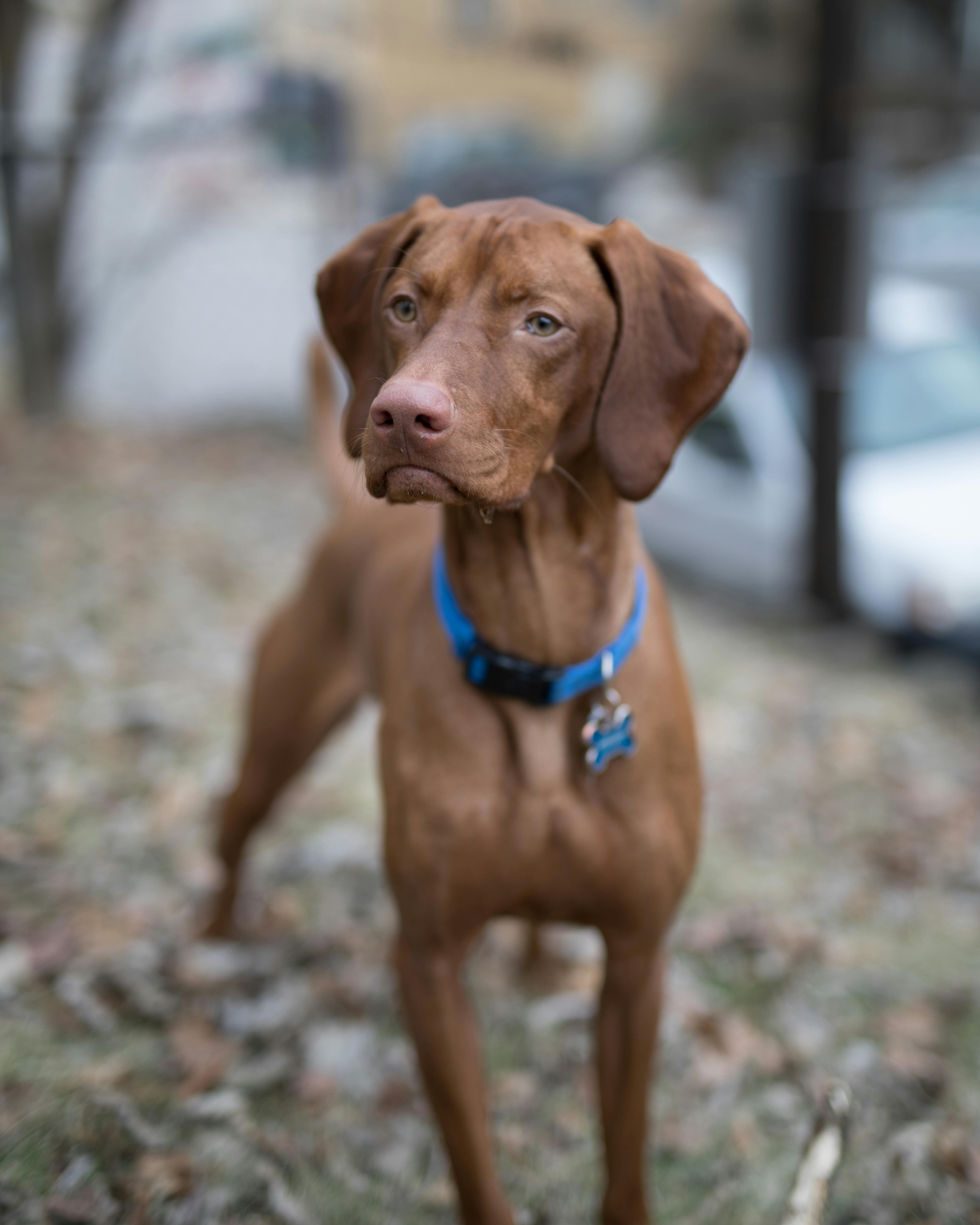
Vizsla | Dog Breed
Last updated May 29, 2024
- Size 45-65 lbs
- Popularity Not that Common
- Typical Lifespan About 12 years
- Exercise Vizslas thrive with daily vigorous exercise, including long runs and active play sessions.
- Grooming Needs Vizslas have minimal grooming needs, requiring weekly brushing to manage their short coat and occasional baths to keep them clean.
- Country of Origin Hungary
- Adaptability Vizslas are versatile and can thrive in both urban apartments and rural settings, provided they receive ample exercise and mental stimulation.
- Shedding Level Vizslas shed a moderate amount year-round, with increased shedding during seasonal changes.
- Energiness Vizslas are very energetic and need plenty of physical activity to stay happy and healthy.
- Vocality Vizslas are generally quiet but can become vocal if they are bored or anxious. They may bark occasionally to alert their owners or express excitement.
- Trainability Vizslas are highly trainable, responding best to consistent, positive reinforcement methods.
- Dietary Needs Vizslas need a balanced diet rich in protein to support their active lifestyle and maintain lean muscle mass.
- Weight Range 45-65 lbs
- Child Friendliness Child-Friendly
- Social Needs Vizslas thrive on close companionship with their human families and enjoy being around other animals, making them perfect for active households. Their friendly and affectionate nature ensures they form strong bonds and are happiest when included in daily activities.
Please provide the Finnish text you would like to have translated into English.
Character
The Hungarian Vizsla is a heartwarming companion whose loyalty and zest for life fill the home with happiness. This lively breed is like a work of art, each brushstroke filled with passion and energy. Vizslas are born athletes who love long walks in nature and are ready for any adventure.
Passionate and intelligent, the Vizsla is always eager to learn new things and work closely with humans. Its trainability and desire to please make it an excellent partner for various dog sports. The Vizsla is also a master at expressing its emotions – it can be joyful, gentle, and serious when necessary.
The Vizsla's social and friendly nature makes it a wonderful family dog. It forms deep bonds with its family and is especially gentle with children. However, this dog does not enjoy being alone and craves constant company and attention. It wants to be part of everyday family life and special moments, bringing love and warmth.
This breed is like an ever-burning flame, whose passion and thirst for life never fade. It requires a lot of exercise and mental stimulation to stay balanced. The Vizsla is also an excellent hunting dog, with an exceptional sense of smell and concentration. Its strong hunting instinct, however, requires guidance and understanding so that it behaves appropriately both at home and outdoors.
The Vizsla is more than just a pet; it is an active life partner that fills your days with joy and significance. It is a loyal friend that needs a human who understands and appreciates its unique character. The Vizsla's warmth and desire for love make it a valuable family member, sharing both the hustle and bustle of everyday life and peaceful moments with you.
History
The Hungarian Vizsla, also known as the Hungarian Pointer, has been bred over centuries specifically for the Hungarian nobility as a hunting companion. The exact origins of the breed are a bit murky, but it's clear that the ancestors of the Vizsla played a central role as early as the Middle Ages, accompanying Hungarian lords and kings on hunting expeditions across vast game lands.
Vizslas were known as skilled bird dogs, specializing in finding, retrieving, and tracking game. Their refined sense of smell and exceptional speed made them valuable assistants in hunting. Over time, the appearance of the Vizsla also evolved to meet the needs of hunters: its muscular yet sleek body, wine-red coat, and intelligent, expressive eyes are characteristics that have developed over centuries.
During World War II, the existence of the Vizsla was threatened as the upheavals of war and social changes significantly impacted their population. Dedicated breeders saved the breed by actively working to preserve and refine it. After the war, the Vizsla spread to other countries and gained international recognition as an excellent hunting and companion dog.
Today, the Vizsla is valued both as an active hunting dog and a beloved family member. Its friendly and gentle nature, combined with its energy and intelligence, makes it an ideal companion for both hunting trips and active family life. The history of the Vizsla is a story of survival, adaptation, and deep connection as a companion by man's side – traits that are still strongly present in the breed today.